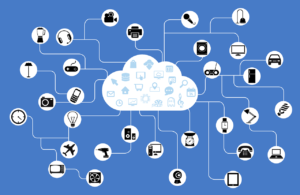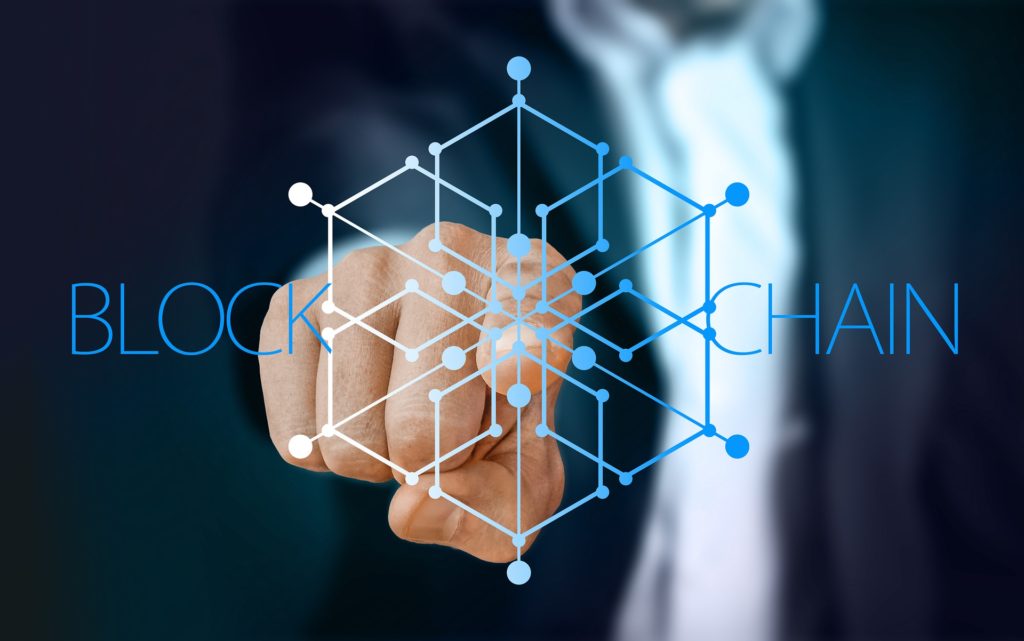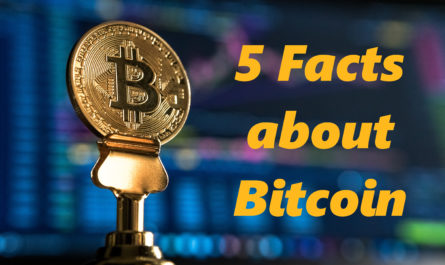Blockchain is perhaps the biggest technology trend currently. The blockchain technology is a kind of bookkeeping, which is used in the Bitcoin, for example, to be able to allocate unique bitcoins. The double-spending problem also solves the blockchain. In addition, the innovation receives a lot of attention from the industry. Many companies are now building their business on the blockchain technology, so taking a look at what the blockchain actually is, is desirable.
What is a blockchain?
First of all, Blockchain means a chain of blocks so far so easy. And that’s exactly how you have to imagine this technology. It is a database of blocks. Often Bitcoin is equated with the blockchain, but this is not correct. It’s true that Bitcoin is based on Blockchain technology but Bicoin is a cryptocurrency and not the technology itself. The blockchain technology can be applied not only to cryptocurrencies, but to many areas of our everyday life (more on that later). But since Blockchain is so closely associated with Bitcoin, it is obvious to explain the technology using Bitcoin.
So back to the blockchain. In Bitcoin, the chain began with the so-called “Genesis Block” (this is the first block of Bitcoin called). Thereafter, further blocks were and will first be checked and then appended in chronological order at the back, resulting in a chain of blocks (blockchain).
What do these “blocks” consist of?
The blocks always consist of a (transaction) history. This means that if new transactions are made, they will be verified and sealed in a new block by the so-called mining (mining of Bitcoins).
This new block is then attached to the existing chain at the back and also contains the history of the previous block in the form of a checksum (similar to the cross sum). Thus, the last block also contains the checksum of the entire chain, because even the previous block has internalized the checksum of the block before him.
Is the blockchain secure?
The examination of these blocks is based on “proof-of-work” after which the blocks are then hung on the chain. Proof-of-work means that these blocks are validated by “work”.
The so-called miners create this “proof-of-work”. These are simply computers that have to solve complex arithmetic tasks in order to prove the blocks (and the information they contain) with their work. As a reward for these workers, the miners receive bitcoins and in this way new bitcoins come into circulation. They are mined through the work of the miners, which is why the Bitcoins manufacturing process is also called mining.
The proof-of-work process causes very high power consumption and is therefore occasionally criticized. However, the process makes the blockchain secure. Why? Because the blockchain could only be hacked if someone managed to muster up computing power that corresponds to 51% of all participants in the system. This could then determine that e.g. transactions should be redirected to a completely different account.
This theory is very, very unlikely, especially regarding Bitcoin. As mentioned at the beginning, the power consumption is so high that it would be so costly to generate a computing power of 51% that it is not worth it.
In addition to the proof-of-work consensus process, some cryptocurrencies also use proof-of-stake. (Other options are also possible, such as a combination of both)
So far, there is not “the best” method of validating transactions. Because the biggest problem that most cryptocurrencies face is called the trilemma problem of cryptocurrencies.
Decentralization
As we have noted, all participants in this community must confirm this transaction history. So there is no central instance here, which decides about the system. A big difference to our monetary system.
This decentralization solves many problems. Examples for this are:
-
Security and transparency is guaranteed because the complete transaction history is visible to everyone
-
The state can hardly prohibit its use, as there is no central office
-
Manipulation and censorship of transactions is almost impossible
-
Double Spending is impossible
There are certainly other benefits. But whenever a thing brings advantages, disadvantages are not inconceivable. Some examples:
-
Transparency (You can not tell who owns a Bitcoin account, for example – you do not see a name but a combination of numbers and letters – but everyone can see all the account movement of each address)
-
You have to incite the participants of the system to make their computing power available, otherwise no transactions are possible
-
Decentralized system is more expensive (If everyone is involved in the decision, it costs more than if one decides alone)

Decentrality: Represented a peer-to-peer network, ie a network of equal participants.
What types of “blockchains” are there?
There are two different blockchains. An open block chain, which is publicly accessible to everyone, as it is e.g. Bitcoin and Ethereum are the case. In addition, there is also a closed (private) block chain, this is only available to certain participants. Such private blockchains are of particular interest to companies as companies are able to maintain their trade secrets.
What are “smart contracts”?
Smart contract means intelligent contracts. So these are contracts that are executed automatically and so after the conclusion of the contract, the contracting parties have to worry about anything else. The contracts are stored in programming language and the programmed code ensures that contracts are adhered to. It ensures legal certainty without the need for notaries. These smart contracts are only possible thanks to the blockchain technology originally developed for Bitcoin. Smart contracts make automatic contracts possible, so an “if-then” situation. Especially Ethereum specializes in smart contracts.
If package was delivered – Then the payment of the purchase price is released for the seller (The parcel deliverer confirms the delivery)
➨ Process completely automated and secure
Possible applications
In addition to cryptocurrencies, other areas can benefit from the blockchain. In the context, these are mainly:
Banking
First and foremost, international payments are in the foreground here. Particularly noteworthy here is the crypto currency Ripple (XRP) or the technology behind it. Ripple has meanwhile entered into several partnerships with well-known banks that are testing the technology of Ripple and some of them have even already announced that they want to implement this technology. Even American Express sees potential in this technology. So said some time ago, the director of business payments (Carlos Carriedo) Ripple have the potential to revolutionize cross-border payments worldwide. Ripple manages to make international payments much more efficiently, it is much faster and significantly cheaper than with traditional service providers. So it is making a breakthrough, whether this is reflected in the course of the Coin XRP remains to be seen, after all, this coin is not necessarily needed for the technology of ripple.
Even securities trading transactions could be executed on the basis of blockchain technology. Thus, more and more stock exchanges are considering building up the trading businesses on the Blockchain. Among other things, the Swiss stock exchange SIX is building a platform for securities trading based on blockchain technology, which should be available by mid-2019.
Internet of Things (IoT)
The Internet of Things is a network of physical and virtual objects. These objects communicate with each other and exchange information.

Maybe one or the other “smart home” is a concept. Internet of Things is similar, but it covers a much larger amount of money. So it is also transferable to companies, food, pets, etc.
Imagine all things around you would communicate with each other. The toaster, blender, cutlery, bathroom scales, etc. are all interconnected via the Internet and exchange information, e.g. about how fast you eat something. The data is then adjusted and if you wanted to lose weight and the toaster on your tracking app noticed that you had already eaten plenty of carbohydrates, he will refuse to toast you bread.
Sounds crazy, and yes it is! But that’s the future that already takes dimensions. Your car pays for itself after refueling the fuel costs, your fridge orders food after independently, when he realizes that the eggs are missing. All this is not only thinkable but already in the implementation.
Above all, of course, the cryptocurrency IOTA is interesting, because the cryptocurrency works exactly on this implementation.
Share economy
The sharing economy is also important in this regard. Because the combination of smart contracts and IoT could lead to a more efficient use of property. For example, the trend to own a car is going back, people would rather rent a car instead.
Imagine how flexible you could be if you rent a car when you really need it and only pay for it when you really use it. Imagine a world in which it is possible to go out and book a car nearby and use it to move away. Fully automated contract handling and device communication, you do not have to worry about anything but choosing the car that suits you the most.
Music industry
Currently music services like Spotify dominate the market. But what if you only pay for what you actually listen to? So the music industry could be revolutionized if it is decentralized on the blockchain.
The path from the artist to the consumer becomes much shorter. The slimmer structures eliminate many costs. This makes it more efficient and therefore more cost-effective.
The artist sets a price and if the song is listened to, for example, then the artist is paid automatically. There are already numerous start ups working on such platforms.
Travel
Traveling can be quite annoying when you first book the trip, spend hours at the airport and then possibly even to excess, your own data is lost at the hotel provider or not even transmitted. So much stress, but the whole thing should be vacation? That’s what might soon be a thing of the past. The solution to this is the blockchain-based e-identity.
The whole works by the identity is deposited in the blockchain. This means that your booked trip only has to be linked to the identity and you can drive to the airport and identify yourself only with a biometric procedure (eg fingerprint sensor).
All further tests then run automatically. Does that sound futuristic, too? But that is already a reality, because in Estonia citizens can already apply for this e-identity. Since the data of the blockchain is immutable, no errors in the transmission of your data to the hotel, airport, etc. can happen.
Trading
Also in this branch is starting a revolution. With the help of Blockchain, it will be possible to make the whole supply chain leaner and more efficient.
When trading is based on the blockchain, the supply chain becomes more transparent and efficient. Some start-ups are working to make the traceability of products to customers as easy as possible. This would make the products forgery-proof.
An interesting cryptocurrency in this respect, which pursues this goal is VeChain (VET). The goal is to make sure that the product offered is not fake and that the customer can track the supply chain. Transparency is gaining more and more value in our time. Walmart recognized that and is already working on building the blockchain.
Conclusion
The blockchain is rightly a technical trend. It is important that the blockchain is not equated with Bitcoin. Bitcoin and Blockchain are not the same. Bitcoin is based solely on this technology. Blockchain technology allows us many opportunities and can make our lives easier. This technology can simplify processes while being secure, and this security is needed to build trust. The technology and its possibilities may sound futuristic, but as several examples have shown, the implementation of blockchain technology is already progressing.
But the disadvantages associated with such a revolution are also important. First of all, the technology is still in its infancy. It is not arbitrarily scalable and can not be easily implemented anywhere. So there is still need for further elaboration and improvement in order to be able to serve even mass markets and to retrieve information just-in-time.
All in all, it remains important to keep an eye on this technology, because not in vain have well-known companies already invested millions in the research and embedding of this technology. Anyone who is prepared to invest so much has weighed up the opportunities and risks and worked out that the opportunities and potential outweighed them. It remains exciting how our future of digitization will develop and whether Blockchain technology will prevail.




